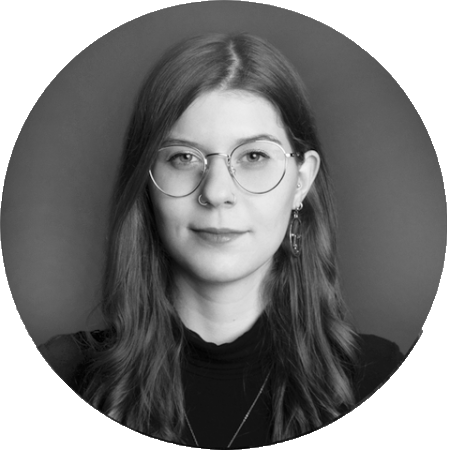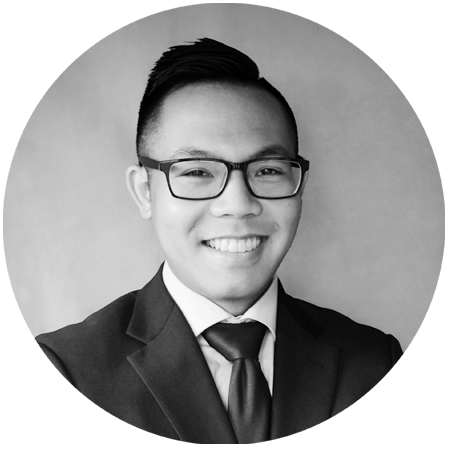Founding the First Community Meeting
Plans for Community Meeting, an educational collective focused on dispelling mental health taboos, started in December 2017. A month later, Scott and her co-founders, Morgan Freed of Emo Nite, Adam Weiss of Ham on Everything and musician/activist Sirah, held the first meeting on addiction at the Echoplex in Echo Park on Jan. 13, 2018.
“Why do this online?” Scott said, reflecting on her decision to take action. “Let's do it in person and see if we can make some progress.”
Two years later, the project has evolved. Moving to the Kimpton Everly Hotel in Hollywood, Community Meeting has grown while remaining true to its original mission — accessibility.
Guest speakers, often musicians, creatives and social entrepreneurs, advocate for therapy and discuss mental health. In an open-forum style, the meeting delves into personal stories and highlights tips on how to cope with the everyday challenges of modern life.
After the forum, End Overdose, a grassroots project to prevent opioid deaths, present on harm reduction and the opioid epidemic. Then Theo Krzywicki, co-founder and executive director of End Overdose, provides free, in-person training on how to administer Narcan.
Why End Overdose Teaches Everyone to Respond to an Overdose
A 911 call sent Krzywicki and his paramedic team to the home of a 23-year-old man. He lived with his parents in an upper-middle-class neighborhood in Pasadena. He overdosed in his room.
“It took us seven minutes,” Krzywicki remembered. “When we got there, he was cool and pale. I knew he was dead.”
Untrained in how to perform rescue breathing and administer naloxone, the family called for emergency assistance. They waited for the paramedics to arrive, unaware that each minute was crucial.
“If you overdose, you’re not saving yourself,” Krzywicki said. “You’re dependent on the people around you. We want to make sure they know what to do.”
Nasal naloxone is commonly administered by Krzywicki and other paramedics in the county. It’s simpler to use than its intravenous counterpart, and it can be easily administered by anyone. It could have saved the 115 people in the U.S. who die from overdose every day. It could have saved the man in Pasadena, and it could have possibly saved Lil Peep.
While Krzywicki was responding to overdoses, Scott wondered about the circumstances that led to the death of the beloved Soundcloud rapper. She examined his art and his life, now chronicled in the Netflix documentary “Everybody’s Everything.”
It led her to another important question: “What could have happened in the moments before he died that could have prevented this?”
How to Get Naloxone in Los Angeles
Dr. Lello Tesema, associate medical director for prevention at Los Angeles County Department of Public Health, helms the substance abuse prevention and control division. Her previous work at the local county jail brought her to the health department, where she focuses on policies and public health practices that affect vulnerable populations.
“I’ve always been drawn to social justice work in medicine,” Tesema said.
Tesema oversees programs that provide naloxone and a myriad of other services for opioid use disorder and addiction. The programs address everything from early intervention to harm reduction, which includes brick-and-mortar syringe exchange programs, referral pathways to treatment, education on how to prevent infection, plus HIV and hepatitis B testing.
“There are several ways in which people can get naloxone,” Tesema said. “For people actively in treatment, one is through a prescription through their physician.”
Another access point is through a system known as the naloxone standing order, which Scott discovered in 2017. In the state of California, the standing order acts as a universal prescription to provide naloxone to state residents who request it.
But there’s a caveat. Not all pharmacists have received the required training from the California State Board of Pharmacy to be able to dispense naloxone without a doctor’s prescription.
For people trying to access Narcan without a prescription, the medication can be expensive. Without insurance, a kit with two doses of Narcan costs an average of $135.
Prevention organizations like End Overdose fund no-cost Narcan kits through government programs and grants. One grant, provided by the Department of Health Care Services, issues free naloxone to community-based organizations. Donations play a significant role, too.
“And we just give it out,” Krzywicki said. “Because you shouldn’t have to spend $135 for yourself to have a Narcan kit.”
Here's Why Local Organizations Provide Free Narcan in Los Angeles
Tesema has seen rising overdose rates in people who use meth, cocaine and benzos. It’s due to growing contamination of fentanyl in illicit drug supply chains beyond opioids, she said.
“We provide fentanyl testing strips,” Tesema said, “which we know from early research, helps drug users make informed choices about their drug use.”
Fentanyl, a potent and lethal opioid, can be produced in large quantities. In illicit economies, dealers find it cost-effective to mix even a microgram of fentanyl with Xanax to turn a profit, Krzywicki explained.
“Before, the general thinking was that if you're using opioids, carry Naloxone,” Tesema said. “Now, we encourage it for anyone who uses any kind of illicit substance.”
Los Angeles County has a robust profile of clinical services. Targeted primarily to addicts and the homeless, the services may sometimes struggle to reach friends or family members of casual users.
“If you’re a 50-year-old mom in Pasadena, you're not going to go to Skid Row. You may be embarrassed, you may be uncomfortable,” Krzywicki said. “And so that person needs access to this training because they're probably going to be the one to save their kid's life.”
Through training and distribution programs, the department is working alongside community organizations to expand access to naloxone. Professional teams in law enforcement, medical practice and pharmacy practice work with health and insurance providers to form a county coalition.
Led by the department and run by community entities, SafeMedLA.org unites various action teams. All programs are required to make Naloxone available to their clients.
“They’re all working to reduce the toll of the opioid epidemic,” Tesema said.
Stigma Surrounding Opioid Harm Reduction
“Stigma is a huge issue, and a huge killer in the drug community,” Tesema said. “Whether it's overdose, or access to treatment, or otherwise.”
The department offers an open-door policy where an estimated half of clients facing addiction are ultimately referred to treatment, Tesema said. But a major issue is the stigma, which limits access to both medication and treatment.
“Many people don't get medication for addiction treatment because of this kind of persistent idea that people who take medications for their drug addiction are substituting one drug for another, and they're not really quitting,” Tesema said. “Unfortunately, that interferes with people's ability to get the help they need."
End Overdose provides a formal training agency for private institutions to schedule an appointment for overdose response training. It’s a way for friends, family members and people close to addicts to learn how to identify and respond to an overdose.
“If you have a 22-year-old living at home that just got out of rehab, the person that's responding first is their mom,” Krzywicki said. “That was the trigger — everyone needs access to this.”
Simultaneously, Community Meeting unites activists who have arts and events backgrounds with experts in the medical field. Capitalizing on shared skill sets, the organization brings information on mental health and addiction to demographics who may not be directly receiving it.
“Life is about human connection,” Scott said. “And the way to move things forward is through communication.”
The organization hopes to become a service provider to companies involved in entertainment, offering empathy training, community meeting panels and preventative actions. Scott has also worked with the Los Angeles Nightlife Alliance (LANA), which maintains safety and raises the standards of the underground scene.
Scott intends to bring the model to other states, hosting signature meetings at festivals and touring high schools and colleges. The goal is to stop bad things from happening to everyone, young people specifically.
“It says a lot about where we're at and how we understand and respond to these types of events,” Scott said. “I feel like Community Meeting is a way to shift that culture.”
Due to the coronavirus, the next Community Meeting will be held online through the Zoom platform on Sunday, March 22, 2020. Get more information here.


